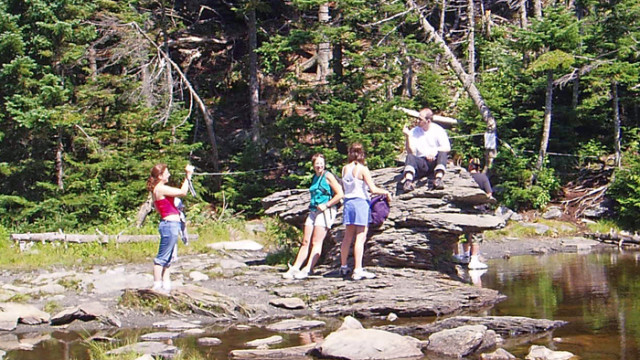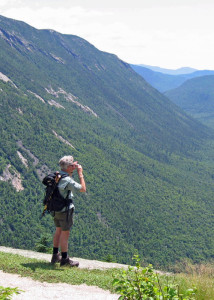
Every week since my Active Outdoors syndicated newspaper column debuted in April of 2004, I have supplied at least two, sometimes as many as four photos with each column. Another 26 weeks a year, I include the same number of photos with my ski column. All of those photos (plus thousands more I have stored away) were taken with simple, point-and-shoot digital cameras, probably very similar to one you own.
There are two tricks to shooting photographs of your active outdoors adventures. Trick number 1 is to always, always, always have a camera with you. Trick number two is to use it a lot; the more photographs you take, the more certain you are of getting a good one.
Digital cameras are great for playing this numbers game. Back in the “olden days”, taking lots of photos cost a lot of money for film and processing just to see what you had. Today, images are, for all practical purposes, free. So there’s no excuse not to shoot lots and lots of images on your outdoor adventures. When you get home, dump them onto your computer, sort them at your leisure, then print any you might want to display.
Of course you can only shoot lots of photos if your camera is handy. I’ve discovered that if I can’t reach my camera instantly, I’ll either miss a fleeting moment because the camera wasn’t quickly available, or, more likely, I just won’t bother to stop and get out the camera when an interesting photo presents itself. The easier it is to access my camera, the more pictures I shoot. That’s why I like the little pocket-sized point-and-shoots rather than bigger, “better” cameras. I may not get magazine-quality photos, but I get photos.
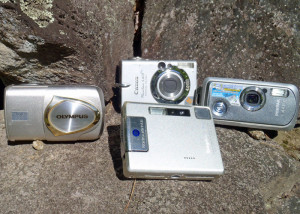
I find that protective cases which hang from your belt or backpack strap are one extra, annoying step that stands between me and whatever photo I want to take. So, most of the time, one or another of my little point-and-shoot cameras rides on a cord around my neck and tucked into the pocket of my shirt or jacket. They are ready in an instant. I’ve trained myself to hit the “on” button when I first touch the camera in my pocket, so by the time the view screen is at eye level, the camera is powering up and almost ready to shoot.
With the neck cord, I don’t have to worry about dropping the camera, as I fumble for it. and it’s probably not going to get banged up too badly unless I get banged up with it. In fact, last year, when I broke my collarbone in a bike accident, my camera came through unscathed. EasternSlopes.com publisher David Shedd used it to take photos of me in the Emergency Room wearing the spiffy new helmet he’d bought to replace the one I’d smashed in the crash. There’s a photo op I’d rather have missed . . .
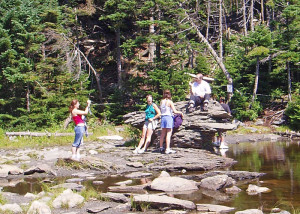
For most of us, taking photos isn’t our purpose for being outdoors. Taking photos is something I do while I am doing something else. I don’t consider myself a “real” photographer. I’m just out to have fun hiking, biking, paddling, snowshoeing, skiing or whatever. But I find that taking photos, whether it’s for the newspaper columns and this website, or just to have a record of the places I’ve been, forces me to really pay attention to my surroundings and what I’m doing, to see more of what’s right there in front of me. It makes being active outdoors even more fun.
Put a camera in your pocket the next time you head out for an adventure. You’ll be glad you did. Life isn’t a spectator sport. Get out, take pictures, and enjoy!
Outdoor Capable Cameras
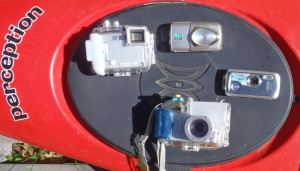
Cameras you use outdoors are inevitably going to get bumped around. And, at some point, you know they are going to get wet. That’s why I recommend getting cameras specifically designed for outdoor use.
Both of the cameras I use daily are shockproof and waterproof point-and-shoot models from Olympus.
If you don’t have a waterproof camera get a waterproof bag like the welded TPU accessory cases from Sea to Summit for the camera you have. It makes the camera a little more difficult to access, but at least you won’t be tempted to leave the camera home if it’s going to rain.
Some camera shops also sell waterproof bags with windows you can actually shoot through in a pinch—though in my experience, they are often awkward to use and photo quality suffers.
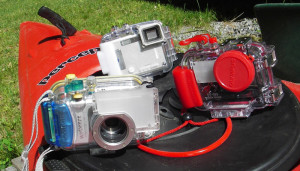
Dive Cameras
If you are going to be shooting photos on or in the water (think kayaking, canoeing, surfing, windsurfing, fishing, swimming) where there’s a real chance of more than a quick dunking, a dive case for your camera is a terrific investment, even if your camera is waterproof. Most makes of digital point-and-shoots have dive housings available. The best ones have a shade over the display window which makes it easier to see the photos you are taking.
I have a dive housing that’s waterproof to 120 feet for the Olympus 720. Using a camera in a dive housing takes a little getting used to, but the buttons are all in the same place so it isn’t too difficult.
If you play a lot around the water, a dive case makes sense, even if it means the camera won’t fit in your pocket anymore.


